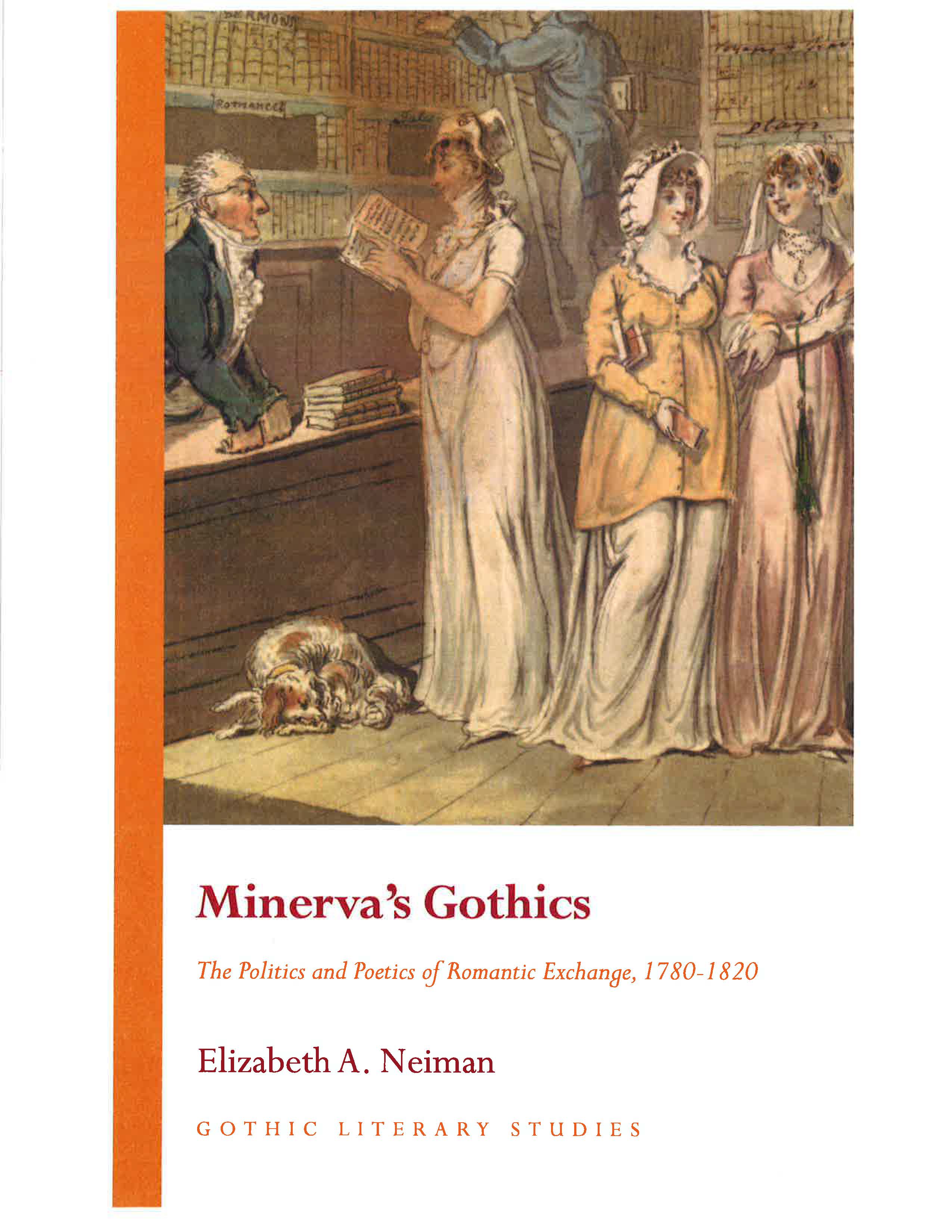
Elizabeth Neiman
I study the British Romantic period (roughly 1790 to 1820). We used to think of this period as dominated by six male poets (Blake, Wordsworth, Coleridge, Byron, Keats, and Shelley) , but we now know it was a diverse landscape of writers, male and female, poets, critics, and novelists. Of course the canonical six are still a lot of fun to read, but their work comes alive in new ways when read in relation to other literary trends and writers.
For example, I just finished a book on “Minerva,” the infamous London publishing house. When most Romanticists think of Minerva, they usually picture a kind of factory for cheaply printed, badly written, formulaic novels. But generalizations tend to get us thinking: are Minerva novels really all bad? Maybe formulaic conventions allowed the marginalized women who tended to write these novels to enter into their day’s conversations and to contribute to cultural and political debates. Only one way to find out! Over the years I read dozens of Minerva novels, did research on publishing records and created a data set to track when novelists published with Minerva and when they deviated towards other presses. The more Minerva novels I read, the more I could see that novelists used formulaic conventions in innovative ways. No one Minerva novel changes the literary landscape but I found that as a collective, they reveal a collaborative model of authorship that rebuts the Romantic constructions of “genius” we’re still grappling with today.
I have just started work on a new, two-part project: a reassessment of sentimental novels as as a kind of “life-writing” that is also a memoir about losing my mother to pancreatic cancer three years back. Both will expand what we know about Romantic-era expressions of grief and question commonplaces about life-writing that we have inherited from the Romantic period.
